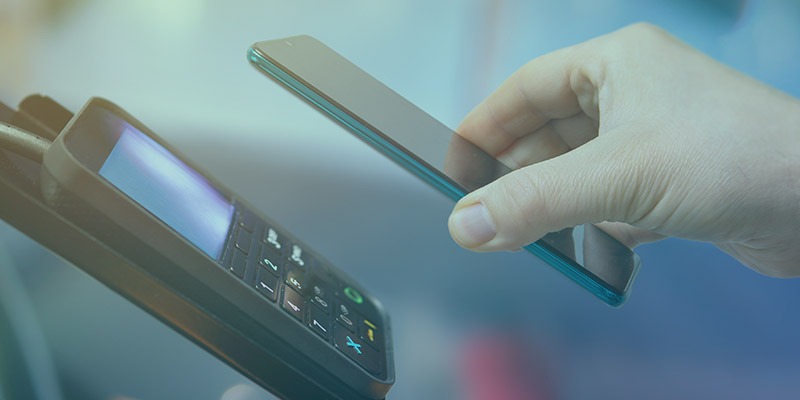The 5 Biggest Payment Engagement Trends for 2021
 Bob Bennett
Bob Bennett

With 2020 behind us, all eyes are looking forward to what 2021 holds. For billing and payment professionals, that curiosity can be summed up in one critical question: what are the trends that will shape the payments industry this year?
While no one has a crystal ball to provide a definitive answer to that question, we do know one important thing about the future of payments – the industry focus is no longer about simply accepting online payments. By now, every savvy billing organization has incorporated online channels into their payment offerings.
Moving forward, it’s all about providing a world class payment experience. That means focusing on user experience priorities like working to close the mobile payments gap, providing optimized, omni-channel payment options, offering self-service routes that provide outstanding convenience (i.e., automatic payments, paperless billing), and automated communications via email and text messaging.
Let’s look ahead to forecast and dissect some of these major payment industry trends that will take center stage in 2021.
1. Continued demand for contact-free payment options
Throughout 2020, we witnessed the impact of COVID-19 on nearly every industry. For payments, the global pandemic played an important role in accelerating the demand for contact-free payments – but this trend was well underway before COVID-19 hit.
One major issue that has followed this spike in online payments are surges of customer service calls. This is largely due to the new swath of customers who are paying online for the first time as a result of COVID-19. These new digital payers are likely used to manual payment methods, like mailing checks or making in-person payments. So, if your online payment platform is too difficult to use, those frustrated customers may turn to calling your staff with their online payment questions.
Unfortunately, the issue extends past phone calls. According to the MA Collectors Association, plenty of customers are still physically going to their local town halls to pay bills and ask questions in-person, despite signs indicating these offices are not open to the public.
Clearly, while the demand for contactless payments saw a spike in 2020, this need isn’t going anywhere in 2021. What’s more, the need for those contactless payments to be understandable to all payers is growing increasingly critical.
Address the trend: To deter payers from in-person interactions or overwhelming your staff with service calls, your billing organization must provide the easiest possible online payment experience. An intuitive user experience isn’t important just for first-time online payers – consumers who are accustomed to highly intuitive online experience (i.e. younger generations, like Millennials and Gen Z) will expect an effortless online payment experience, too.
Once you’ve found an Electronic Bill Presentment and Payment (EBPP) solution that can provide this simple payment experience, your organization must highlight every available method for contact-free payments and communications. Utilize every communication channel available to your organization to spread the word about the alternate payment options at the payer’s disposal. Consider creating resources to help payers better understand how to use your contact-free payment offerings – this should help reduce call and email volumes for your staff.
2. Emphasis on closing the mobile payments gap
For most customers, the first touchpoint with your organization is their mobile device; that’s where they first see a new bill, reminders, or notifications of payment due. However, the percent of payment transactions on mobile devices still lags behind traditional desktop browsers, and this represents a missed opportunity for billing organizations.
The rise of mobile wallets and mobile payment options has been gaining momentum in the last few years. Going into 2021, mobile payments will be a billing essential – but, unfortunately, many billing organizations are still not offering mobile, optimized payment experiences, which is a big deterrent for digital payment adoption.
Address the trend: First, make sure your organization is offering mobile channels to meet the growing customer expectation for mobile payments. Of course, it’s not enough to simply offer mobile payment channels without optimizing the user experience of those channels. Consider optimizing the mobile experience by providing screens that have been reformatted to fit the device or removing barriers to checkout, like login screens.
To truly close the mobile payments gap, your organization’s omni-channel experience must translate to your mobile platforms. This means customers can start a payment through any channel (an online portal, IVR kiosk, etc.) and have the ability to continue that payment on your mobile payment channels, with all the same context and ease-of-use.
3. Frictionless experiences and real-time information
Many modern consumers have high expectations for all their online experiences, largely due to daily interactions with innovative organizations like Amazon and Google. For billing and payments, this means customers now expect the convenience of real-time information. Payers expect to know what their balance is in real-time, which means bill notifications should always be personalized and up to date.
These heightened expectations also translate to an increased demand for frictionless payment experiences. A frictionless payment experience means your organization has minimized the barriers involved in the checkout process for payers. Tangibly, this means offering a streamlined checkout process that eliminates or cuts down on the steps needed to make a purchase. This can involve mobile payments, one-click payments, automatic payments, or the option to use digital wallets.
Address the trend: As we’ve touched on, your organization will need to provide a simple, straightforward payment experiences to match the expectations of modern consumers. Start by evaluating your organization’s current payment experience, flagging any barriers along the checkout route. You’ll want to invest in an EBPP solution that can streamline the payment process, effectively eliminate those checkout barriers, and offer the real-time billing information your customers expect.
Another easy way to provide a frictionless payment experience is absorbing online processing fees. At Invoice Cloud, our partners who choose to absorb these fees tend to see up to a 50% increase in online payment adoption. And according to the data cited in our research report, The State of Online Payments, 13% of customers avoid paying online because of fees. Absorbing this small charge should drive more people to use your online and mobile payment platforms, and it’s a fantastic step in providing a frictionless experience on both channels.
4. Increased security concerns from payers and billers
In recent years, we’ve all seen an increased concern regarding the safety of our payment information – particularly at the end of 2020, when the concern was accelerated with the publicity surrounding the SolarWinds breach. Billers are subjected to security threats, such as ransomware, more than ever before – and these cyberattacks have created a sense of distrust towards online payments.
These security concerns don’t just pose a threat to sensitive payment information, they can also have a detrimental impact on your organization’s online payment adoption. If payers are too nervous to make online payments, you can trust they’ll take whatever precautionary steps they feel necessary – including making in-person or manual payments. These measures can have costly and time-consuming repercussions for your organization.
Address the trend: To keep payer information safe and online payment adoption up, you’ll need to offer a secure payment platform your customers can trust. You’ll want to look for a PCI Level 1compliant solution, preferably a cloud solution. The Software as a Service (SaaS) model is the ideal software solution for payments, particularly for its superior security. Unlike on-premise or hosted solutions, true SaaS delivers continuous improvement and requires no maintenance on your part. This guarantees your organization has the latest security patches to remain compliant with industry standards.
Once you’ve found a SaaS solution for your organization, make sure to share the impressive security functionality of your new platform. This knowledge should help ease customer concerns and encourage continued online payments.
5. The transition from bill payment to payer engagement
As we’ve established, offering online payment methods is no longer a differentiator in the billing industry. Digital payments are moving into an age where the key to organizational success is effective payer engagement.
The more frequently and thoughtfully you can engage payers across your platform, the more effectively you’ll be able to drive them to self-service routes; i.e., enrolling in automatic payments or paperless billing. The more payers taking advantage of these self-service options, the less time your staff needs to spend processing those payments.
Strategic customer engagement is also a great way to prevent delinquent or late payments, therefore improving internal collection efficiencies. Having the ability to launch outbound campaigns, for instance, where you can communicate to payers everything from bill reminders to emergency notifications regarding utility services, is key for keeping payers engaged.
Address the trend: If your organizational resolution is to focus on more effective customer engagement in the New Year, you’ll want to start at the source: your payment platform. Make sure that your chosen EBPP provider offers customer engagement touchpoints throughout the entire payment process (on the payment screen, on the payment confirmation screen, in the confirmation email, etc.). Each touchpoint should be personalized to the payer’s experience and prompt them to enroll in services like automatic payments and paperless billing.
The second step is a thoughtful communication strategy to bridge the gap between you, the biller, and your customers. Keep in mind that not all payers will have the same communication preferences, so make sure your organization is using every channel at your disposal (email, automated voicemails, text messages, etc.) for bill reminders and other communications. And remember, the more personalized your messaging is, the more engaged payers will be.
If your organization hopes to keep pace in 2021 – or differentiate itself from competitors in your space – it will be critical to address each of these industry predictions appropriately.
The simplest way to address each industry trend without too much heavy lifting? Finding an EBPP provider that can meet the ever-changing expectations of your payers.
Invoice Cloud was designed with customer experience top of mind, which means our clients offer payers more than online payment options – they offer simple, engaging payment experiences. That’s just one reason our platform consistently drives 2 to 3 times the industry average adoption rates and record enrollments in self-service options like paperless billing and online payments.
To learn more about how Invoice Cloud can keep your organization ahead of the curve in 2021, schedule a demo today.


